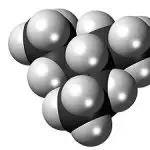The small outgrowth or pouch kind of lump found beneath the skin is known as the cyst, while a tumour is an abnormal growth or mass or swelling of tissues. Identifying lump or bump under the skin area is quite disturbing, but these are not always harmful. The two most common types of lumps are cyst and tumours. Though it is difficult to differentiate them, as these are found … [Read more...] about Difference Between Cyst and Tumor
Difference Between Flora and Fauna
Flora is the term used for studying the plant's life living in a particular area or region, whereas fauna refers to the study of animals life living in any geographical area. Secondly, all kinds of grasslands, trees, plants, comes under flora, on the contrary, all types of animals, birds, and insects fall under the category of fauna. Although biota is the term used for … [Read more...] about Difference Between Flora and Fauna
Difference Between Bacteria and Fungi
Bacteria and Fungi come under different categories; the former one is the prokaryotic cell while the latter one is Eukaryotic cells. Apart from this, there are many differences between them like bacteria need a host to live, and they can be autotrophs as well as heterotrophs, whereas fungi grow their own and are heterotrophs which depend on others for their food. Bacteria do … [Read more...] about Difference Between Bacteria and Fungi
Difference Between Covalent, Metallic and Ionic Bonds
Covalent bond occurs between the two non-metals, metallic bond occurs between two metals and the ionic bond occurs between the metal and the non-metal. Covalent bond involves the sharing of electrons, while metallic bonds have strong attractions and ionic bonds involve the transferring and accepting of electrons from the valence shell. The adhering property of an atom, in … [Read more...] about Difference Between Covalent, Metallic and Ionic Bonds
Difference Between First and Second Law of Thermodynamics
The First Law of the Thermodynamics is related to the conservation of energy, while the Second Law of Thermodynamics argue that some of the thermodynamics processes are impermissible and does not entirely follow the First Law of Thermodynamics. The word 'thermodynamics' is derived from the Greek words, where "Thermo" means heat and "dynamics" means power. So thermodynamics … [Read more...] about Difference Between First and Second Law of Thermodynamics





